Fintech
financial supervisors strive to keep the pace –
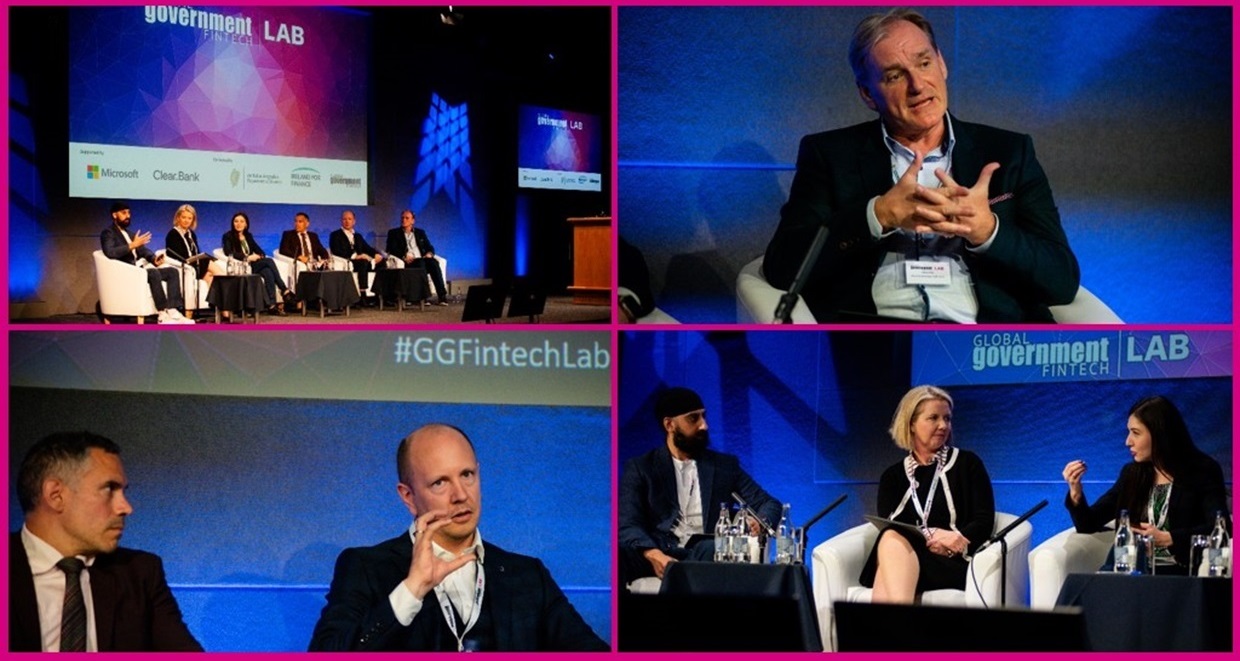
Global Government Fintech Lab 2024 panel session four: Parma Bains (moderator), Denise Delaney, Marine Krasovska, Moad Fahmi, Jon Reidar Testad and Steve Barr | Credit: Deirdre Brennan
GLOBAL GOVERNMENT FINTECH LAB 2024: PANEL FOUR
The IMF’s Parma Bains steered a discussion with financial authority representatives from Ireland, Latvia, Bermuda and Norway, plus the private sector
Financial regulators face the challenge of maintaining financial stability and protecting consumers while enabling innovation in the companies they supervise.
The fourth panel session of the Lab (25 April) – ‘Financial regulators and innovative technology: on the right path?’ – saw the International Monetary Fund (IMF)’s Parma Bains introduce and moderate a discussion that spanned questions such as: how central banks and supervisory authorities can manage this classic challenge of balancing risk with (technology-created) rewards; structural considerations, such as how innovation hubs and sandboxes are helping their engagement with private-sector projects; and how authorities are modernising their own operations using emerging technologies.
Bains was part of the team that set up a UK Financial Conduct Authority (FCA) Innovation Hub in 2014 and, two years later, the world’s first regulatory sandbox (also at the FCA). After moving to the Washington DC-headquartered IMF in 2020, he has worked on the establishment and review of innovation hubs and sandboxes worldwide.
He was invited by Global Government Fintech to begin the session by summarising an IMF paper, ‘Institutional Arrangements for Fintech Regulation: Supervisory Monitoring’, which he co-authored last year.
The paper urged authorities to think carefully about whether establishing new structures such as sandboxes to help with private-sector engagement is worthwhile, stating that for most authorities existing structures will likely do a better job; and that that sandboxes are ‘not a sensible fix to underlying problems with supervisory structures and could amplify existing problems as well as allow authorities to carry out risk-washing’.
RELATED ARTICLE Sandboxes could ‘amplify problems’: IMF analysis questions many test-spaces’ impact – a news story (11 September 2023) based on the above paper
Types of sandboxes
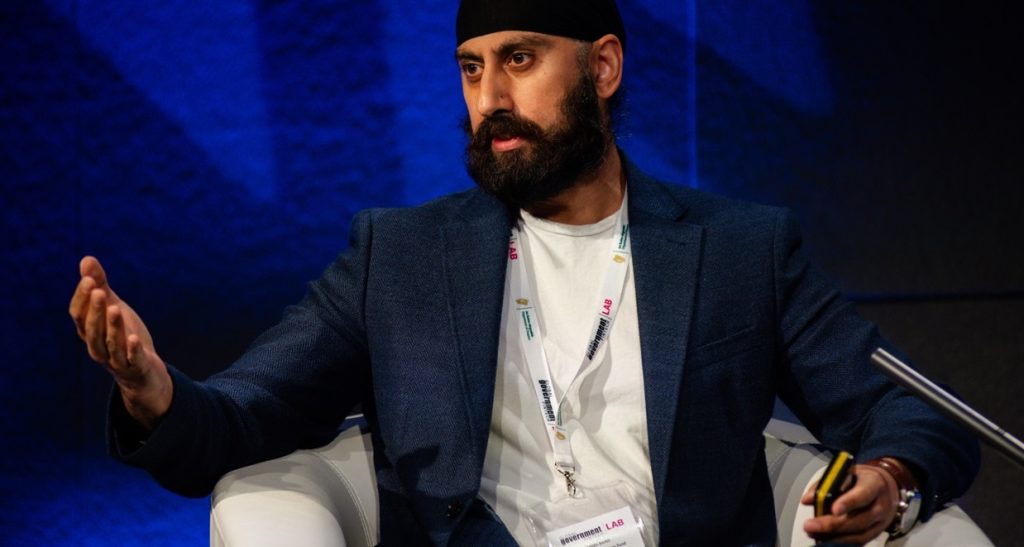 Parma Bains at Global Government Fintech Lab 2024
Parma Bains at Global Government Fintech Lab 2024
Bains opened by focusing on definitions, describing an innovation hub as a ‘dedicated unit or team that acts as a central contact point for firms wishing to deploy innovative technologies in financial services’; and a sandbox as a ‘controlled environment for firms to test innovative propositions with real-life consumers in a live market.’
He mapped out different sandbox types: regulatory sandboxes (which constitute “about 95 per cent” of sandboxes and are “in essence” product-testing sandboxes); policy-testing sandboxes (for example, the in-development UK Digital Securities Sandbox); digital sandboxes (“API [application programming interface] marketplaces that allow firms to connect with information, either provided by the regulator or by firms, which could be real data or synthetic data”); cross-sector sandboxes; cross-border sandboxes; and thematic sandboxes.
“We published a review of more than 100 sandboxes and innovation hubs, and our conclusions were very clear,” Bains said, summarising the paper. “There is limited evidence that most sandboxes deliver the mandate or the goals that the organisation wants them to achieve. The majority of sandboxes that we saw have very little demand and then very little utilisation.”
He acknowledged, though, that “in the right circumstances”, sandboxes can prove to be “fantastically useful”.
“Many authorities set up these sandboxes with such vague and nebulous language in terms of what ‘success’ is,” he said. “But they might work as a ‘signaling’ device. And I do think that, going forward, some forms of product-testing sandbox, as well as policy and digital sandboxes, could deliver some genuinely decent outcomes.”
RELATED ARTICLE Ireland hosts public sector fintech pioneers in Dublin for third ‘Lab’ – an on-the-day event summary of Global Government Fintech Lab 2024
‘Broader package’ of engagement
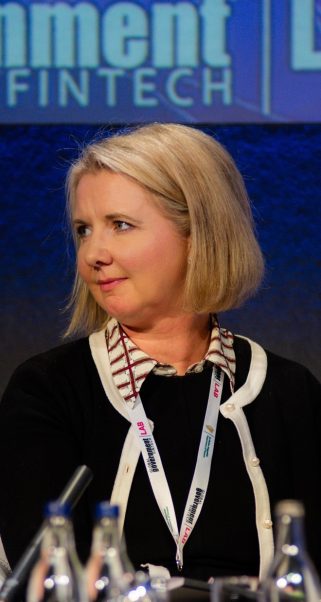 Denise Delaney at Global Government Fintech Lab 2024
Denise Delaney at Global Government Fintech Lab 2024
Denise Delaney, head of the policy and risk horizontal function in the Lab host nation’s central bank, was invited to set out the authority’s innovation-related activities (she also spoke at the 2023 Lab).
The Central Bank of Ireland ran a consultation on ‘innovation engagement’ from November 2023 to February 2024 as it looks to enhance an existing Innovation Hub, which launched six years ago, and launch what it is referring to as an ‘innovation sandbox programme’.
“One thing that came up quite a lot when we engage with fintechs [companies], particularly the smaller start-ups, is: ‘we don’t know what your expectations are… it’s not clear what the regulator thinks on certain things’,” Delaney said.
She highlighted that a ‘Financial Industry Forum’, set up by the central bank in 2022, has an ‘innovation sub-group’, among other routes through which it engages with the private sector on fintech matters
Her main introductory point was that the Central Bank of Ireland’s individual structures and forums should be viewed as part of a broader package of external engagement initiatives, all ultimately driven by a theme of a strategy being to be ‘future-focused’.
RELATED ARTICLE Irish central bank preps sandbox launch after ‘broadly positive’ feedback – a news article (7 June 2024) on details about how the proposed ‘innovation sandbox programme’ will operate after ‘broadly positive’ consultation feedback
Sandbox perceived ‘like an accelerator’
 Marine Krasovska at Global Government Fintech Lab 2024
Marine Krasovska at Global Government Fintech Lab 2024
Marine Krasovska, head of the fintech supervision department at Latvijas Banka, was next to provide introductory remarks (she spoke at the same 2023 Lab session as Delaney and also on the EU digital finance agenda at the 2024 Lab).
The Baltic nation’s central bank operates both an Innovation Hub and sandbox.
Challenges operating Latvijas Banka’s sandbox include that companies misunderstand what they need to do and its purpose, Krasovska kicked off by saying. “They do not read all the regulatory requirements, webpages or any kind of recommendation. They consider that the sandbox is very [similar] to a ‘business accelerator’ and also [that] it is a kind of tool that will give you the ‘green mark’ [approval] from the regulatory side that you are ‘checked’,” she said.
One further challenge stems from younger companies’ typical lack of access to sufficient ‘real’ customer data, which they can also struggle to get established banks to release, Krasovska said. However, she highlighted an example where the central bank had itself provided a RegTech (regulatory technology) company with (anonymised) data, with the company, in turn, repaying the favour by drawing up a list of recommendations (based on its sandbox activity) to the central bank’s anti money-laundering (AML) specialists.
Krasovska aired a rhetorical consideration about the extent to which innovative concepts, as they become more established, can continue to be considered ‘innovative’. As an example, she argued that ‘open banking’ had been around long enough to have outgrown such a label.
RELATED ARTICLE Evolving engagement: governments forge new frontiers with fintech – a write-up of the Global Government Fintech Lab 2024’s opening panel session featuring representatives from Ireland, Austria and Slovenia
Biometric payments and AI
Latvijas Banka’s Innovation Hub is in “very high demand”, registering an average of “at least one” in-depth company engagement per week, Krasovska continued.
The central bank has also “enhanced broader expectation” of the Innovation Hub, she continued, explaining that it is used not only for interactions with individual companies but also as a “platform for discussions” with the private sector on overarching matters.
It has been used as a conduit to promote and host roundtable discussions with industry representatives, for example as a forum for cryptoasset service providers to make proposals on national implementation of European Union (EU) regulation.
Responding to Bains’ research’s findings that sandboxes are often underused, she said that – in Latvia’s case – authorities had sought to adapt its “framework”, with the aim of “discluding” a pre-requisite that companies must already be licensed.
Latvijas Banka has observed growing interest in its sandbox from companies providing currently unregulated biometric payment technology (such as enabling people to pay with their eyes or handprints), as well as AI. “We want to focus the sandbox more [on] AI solutions,” she said.
Fintech: three standout components
 Moad Fahmi at Global Government Fintech Lab 2024
Moad Fahmi at Global Government Fintech Lab 2024
Moad Fahmi, chief fintech officer at the Bermuda Monetary Authority (BMA), was the session’s third speaker (he also spoke at the 2023 Lab). He used his opening remarks to pick up on comments made by Bains, who had questioned whether there was such a thing as a ‘fintech sector’, given the wide variety in size and type of company that provide technology-enabled innovation in financial services (and the variety of those services).
“I think there are three main components to ‘fintech’ that make it significantly different than anything we’ve seen before and, for those reasons, I think we need to rethink entirely how we design our regulatory frameworks,” Fahmi said.
First, fintech is growing “exponentially”, necessitating regulators to “spend significant time and resources looking at things that are small and that may not matter”. As an example, he said that 10 or so years ago or so, regulators were “not that particularly interested in [and] did not necessarily understand” digital assets, thinking they were “maybe just a fad”. But, he said, “it proved that it required quite a bit of regulatory response once it started growing much faster”.
Second, the importance of platforms compared to sectoral delineation. “For that reason, there’s convergence between different sectors and that usually means that some of our frameworks will not work very well,” Fahmi said. “Obtaining multiple licences can be a little bit of a deterrent and also ineffective, both in terms of innovation but also supervisory resources.”
Third, the importance of international co-ordination. “Very close international collaboration [is needed] between regulators, and thinking about what it means when one company operates in 200 countries,” he said.
RELATED ARTICLE SupTech on the rise: financial supervisors explore innovative technology – a write-up of a session at the Global Government Fintech Lab 2023 featuring Moad Fahmi (and representatives from Norway and Croatia)
Data dependence and problem statements
 Jon Reidar Testad at Global Government Fintech Lab 2024
Jon Reidar Testad at Global Government Fintech Lab 2024
Jon Reidar Testad, senior adviser for digitalisation and innovation in the Department of Digitalisation and Analysis at the Financial Supervisory Authority (FSA) of Norway (Finanstilsynet), was the next speaker.
He described the Scandinavian nation’s FSA as having shifted ‘IT and digitalisation’ from being a ‘supporting’ function to a ‘core’ function.
“Everyone wants to be more data driven and this makes sense because we are more data-dependent than before,” he said. “One of the interesting and challenging parts of this is how we can structure and utilise [growing] amount[s] of data,” he added, stating interest in robotic process automation (RPA) and artificial intelligence (AI).
Steve Barr, global industry advisor at Microsoft Worldwide Public Sector (one of the Lab’s knowledge partners), used his opening remarks to emphasise that it was important to define clearly any “business problem” and desired “business outcome” that newly proposed innovative solutions are for, instead of starting with the technology.
He provided examples to illustrate the point. The first related to the UK’s exit from the European Union (in January 2020). Barr recalled that technology was viewed by some as having the potential to “solve” some of the practical challenges created by Brexit, such as with cross-border trade. But potential use of technological solutions was stymied by a lack of policy and regulatory clarity.
He then raised examples of more successful scenarios, both involving the use of AI: work with tax officials on ‘anomaly detection’ to tackle fraudulent invoices in Latin America; and work related to beneficial ownership (who ultimately owns or controls an interest in a legal entity or arrangement, such as a company) to help improve public procurement.
RELATED ARTICLE ‘Your entire organisation needs to be an “innovation lab”’: Australia central bank data chief – an article (25 September 2023) reporting on a panel discussion at the European Central Bank-hosted ‘Supervision Innovators Conference 2023’
‘Getting closer to cracking it’
Bains asked the panel whether regulators should be ‘bolder in shaping the direction of the market’.
“Bolder is not typically a word you use for regulators,” Delaney responded. She referred back to the Central Bank of Ireland’s strategy’s ‘future-focused’ theme. “We can’t deliver consumer protection if we’re not looking at what’s happening in fintech and innovation,” she acknowledged, emphasising that any central bank’s challenge was to balance opportunities that are “clearly” being created by innovation and fintech with risks.
“It can be challenging for us but I think we are cracking it – or we’re getting closer to cracking it,” Delaney continued. “We understand more what technology, what fintech, what innovation is. I think we’re getting better at helping newer firms or firms innovating. Actually, it’s much broader than firms, it’s the whole ecosystem. We’re getting better at explaining what we mean when we say ‘have good controls’; when we say ‘have risk management’; why we expect certain things. I think when you have those two groups – the regulator and the innovators – understanding better what’s happening, then you have a more fertile ground and more fertile place for innovation to grow in a safe and responsible way, and that then obviously feeds into delivery of our mandates.”
Barr had the view that financial regulators and policymakers often do “need to be bolder”, observing a problem with “skills around understanding new technologies and their impact.”
He gave an example from the UK, where he said that the launch of ChatGPT in November 2022 seemed to give a kick to policymakers to accelerate their thinking. “There was quite a rush to get policies out and regulations, and I feel like it’s been a constant catch-up, because by the time they’ve done that, technology has moved on again,” he said. “I think they’ve just got to get more involved at an earlier stage and be more collaborative rather than combative – which is how it feels – so that technology evolves in a responsible way,” he said.
*** RECEIVE GLOBAL GOVERNMENT FINTECH’S FREE EDITORIAL NEWSLETTER ***
Four lessons from Bermuda
Bermuda introduced a Digital Asset Business Act in 2018, as well as a regulatory sandbox (‘Insurance Regulatory Sandbox’) and Innovation Hub in the same year. Fahmi was asked what lessons had been learned from being – in Bains’ words – a jurisdiction where authorities ‘have moved quite early’ on regulation and supervision of cryptoassets (in particular).
“Having a comprehensive framework is key,” Fahmi responded (a first lesson). “We have decided on a very broad definition of ‘digital assets’. It reduces uncertainty linked to ‘which bucket do I fall in?’ and then ‘which requirement should apply to my firm?’. It future-proofs the framework a little bit as well, and it also enables us to focus on: ‘what are the actual risks beyond ‘what bucket do I fall into’?’. Similarly, we have very wide activity coverage within the framework because we find that risk exists in the entire value chain, and consumers will only be protected if every single component of the value chain is appropriately managed.”
Fahmi’s second lesson was the importance of adaptability. “We’ve had to make improvements to our framework every single year over the past five years, and that means either legislative amendments or guidance documents or additional codes, additional rules,” he said. “So, the framework has evolved significantly – and, I think, is very effective today.”
His third lesson was not to “underestimate” the digital asset sector’s interconnectedness, as highlighted by the crypto crisis of 2022. This brings considerations including what information it is possible to exchange across borders and an authority’s ability to supervise across borders to perform consolidated supervision.
His fourth lesson was to “think beyond” existing regulatory tools, highlighting the BMA’s use of a ‘sentiment analysis’ tool and use of blockchain data. “We have recently started building with large-language models to automate a lot of the ‘checklist’ compliance supervision,” he said.
He described RPA as “really critical in building a system for users where you can take advantage of these three things – AI, blockchain data and sentiment analysis data – to build something that users can use easily.”
*** JOIN GLOBAL GOVERNMENT FINTECH’S LINKEDIN COMMUNITY ***
Latvia’s evolving approach
Focus then turned back to Krasovska, who was similarly asked about lessons learned from Latvia’s experiences.
She began by highlighting a recent structural innovation, saying that Latvijas Banka had recently developed a new (second) sandbox focused on helping companies looking to undertake an IPO (initial public offering). “Companies have to go through plenty of internal changes in order to create and establish a corporate governance structure in a way to be fully compliant before they go to the public market,” she explained. “We have created the legal framework for the sandbox and already seven companies are up and running in the sandbox.”
Separately, she said that interactions with companies through the Innovation Hub had triggered a need to review its “internal licensing process”. This has now been completed, she said – with the process giving a fillip by training supervisors and legal advisers in ‘design thinking’ methodology – and was gaining positive feedback.
“For example, one crowdfunding company got a licence from us in two months, and they said that ‘working with you [Latvijas Banka] was like working with another fintech’,” she said. “Actually, the biggest compliment [was] for our unit that works with the fintech companies.”
In respect of broader engagement, Krasovska also mentioned that Latvijas Banka had created a ‘Fintech Forum’ conference (alongside the Investment and Development Agency of Latvia) as a way to engage directly with companies on emerging trends, technologies and business models; and, separately, highlighted that higher education courses on fintech-related topics were (ultimately) improving interactions with the regulator.
RELATED ARTICLE Digital transformers: government finance and innovative technology – a write-up of the Global Government Fintech Lab 2024’s second panel session, which featured Dina Buse of Latvia’s Ministry of Finance
Sandboxes need ‘nurturing’
Asked about the BMA’s experience with its sandbox, Fahmi responded first by saying that “usually in our frameworks we have exemptive powers, meaning that what we do in a regulatory sandbox technically could be achieved in other ways.”
“I think what the sandbox does, though, is clarify to the market how we’re going to use these powers, for what reasons and in what circumstances,” he continued. “I think this is key to a successful sandbox.”
He then drew an amusing parallel with a (non-fintech) sandbox used for children’s playtimes. “They [children] will play with it for maybe a couple of hours, and then they will never play with it again,” he said. “So from time to time, you have to bring in new toys, and you have to have structured play. You have to ‘nurture’ your sandbox.”
“You have to be clear around what you want to achieve in your sandbox,” he continued. “Our sandbox covers all sectors, but in reality, we’ve really seen the usage in digital assets, in insurance and very little in other sectors.” He added that the BMA “want[s] to focus more on the payment and investment side of our sandbox” (and praised the Central Bank of Ireland’s plan to operate its sandbox in thematic cohorts).
“But I think it’s a matter of: what do you want to see? Where do you want to put the investment? How do you structure your activities around the sandbox? And it goes much beyond just simply having a sandbox,” he continued.
“In the digital asset space, there’s a discussion around decentralised finance and how ‘embedded supervision’ can be a potential solution to this,” Fahmi continued. “So, we want to have, this year, a proposal for firms to come in and we want to experiment with them.”
‘Regulations are difficult to communicate’
Testad was asked whether Finanstilsynet had considered introducing a sandbox.
“I like the idea of sandbox but the challenge is to get enough applications, enough companies to apply,” he responded.
He referred back to Barr’s opening observation about the importance of focusing on the ‘business idea’ ahead of technological considerations. It was important, he said, for authorities to assess whether an innovative project is “relevant and strong enough” for the authority to devote “resources on helping them achieve and test”.
“In addition to our own communication platforms and so on, we collaborate with other governmental organisations a lot, and we have a forum where we try to be visible and participate in different events,” he continued.
“Regulations are difficult to communicate if you can’t participate [engage] with fintech companies,” he acknowledged. “We need to lower the threshold for realising new (relevant) business ideas, and that’s through communication and participation and visibility”.
Four phases of innovation
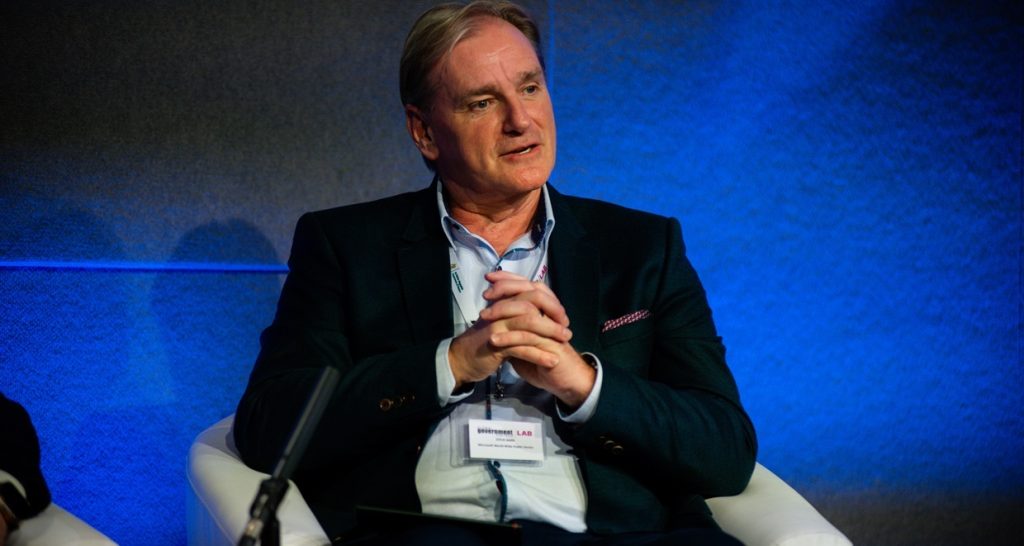 Steve Barr at Global Government Fintech Lab 2024
Steve Barr at Global Government Fintech Lab 2024
Bains asked whether SupTech (supervisory technology) tools can ever be rolled out successfully in isolation or need to be part of organisational transformation.
“I think that’s part of the problem – it is done in isolation – if you do even quantify the problem,” Barr responded.
He referred back to sandboxes, saying that the “testing the business outcome” often played second-fiddle to “testing the product” (and that impact on other organisations, society and citizens was also often ignored, as indeed was the extent to which the product could be adaptable to changing business or external circumstances).
Barr praised a four-phase process – ‘discovery’, ‘alpha’, ‘beta’ and ‘live’ – encouraged by the UK Government Digital Service. “Having that process for innovation is really key because it’s done in so much isolation,” he said.
He added that “having traditional IT people in an innovation area is not going to work” and that “you need the business people in the process all the time.”
“Don’t let it just be the IT people running an innovation sandbox – it’s not going to work,” he concluded.
RegTech ‘critical’ to ecosystem
Krasovska was asked about the extent to which companies themselves need to step up their investment in technology to enhance their compliance processes: their use of RegTech.
“Central banks itself are quite conservative organisations in terms of consumption of RegTech products,” she responded. “Of course, there are reasons behind that: they deal with restricted information, with confidentiality, [as well as] set-up opportunities, service availability, staff availability and so on.”
Latvia’s authority created a SupTech strategy three years ago and “just a very, very small number” of RegTech solutions were seen as being compatible, she said.
She took the opportunity to mention a Latvijas Banka supervisory-related initiative – an internal ‘innovation lab’ (also mentioned at the 2023 Lab) where central bank employees can learn and test possibilities. One idea that has been tested has been whether the central bank should use cloud technology. The upshot (“after very long risk analysis”) was positive, she said, and “all” supervision data and reports are now stored in the cloud (“mak[ing] the supervisor’s job much easier”).
Krasovska concluded by nonetheless describing RegTech providers as “critical” partners to different parts of the financial ecosystem (from banks to fintech companies) and an essential part of “fintech infrastructure”.
AI ‘hasn’t reached puberty yet’
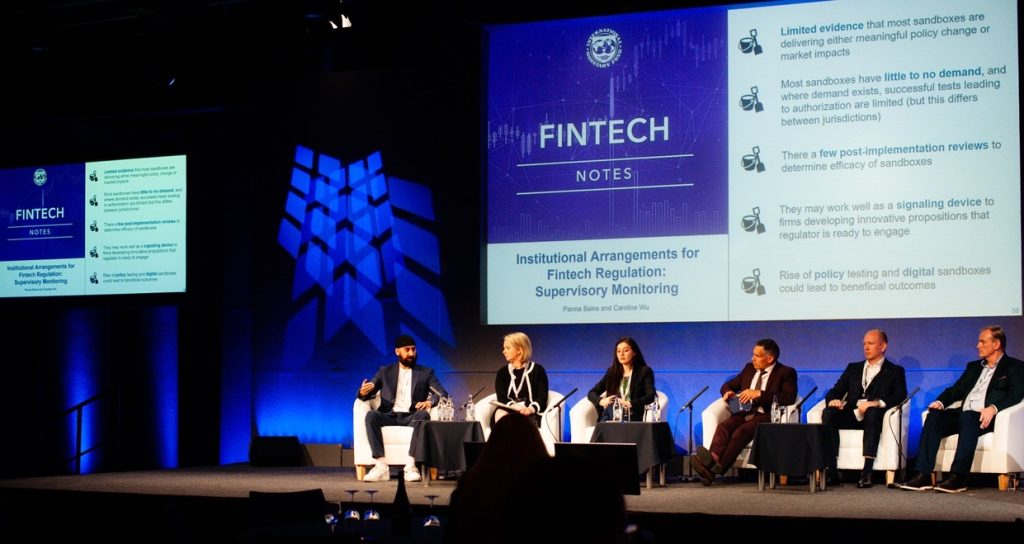 ‘Financial regulators and innovative technology: on the right path?’:
‘Financial regulators and innovative technology: on the right path?’:
(L-R) Bains, Delaney, Krasovska, Fahmi, Testad and Barr
Testad was asked about machine learning-based SupTech tools: specifically whether they could fully replace supervisors or are destined to be supportive functions.
“AI can’t completely replace humans,” he responded. “Wherever there’s human interactions, there will be humans needed. And AI hasn’t reached puberty yet so it’s not mature enough to fully replace it and it demands a lot of resources to actually build AI sufficient enough to be trustworthy.”
He said that Norway’s authority now has “more than 40 active processes” using RPA, which he described as a “great support”.
“You have all your core systems gathering data, and then you have the RPA that can utilise all the data and transfer the data and support processes as well,” he explained.
As an example, he detailed how technology has transformed the process by which data is gathered, processed and assessed in the evaluation of small- and medium-sized banks’ risk status and capital requirements.
“I’m a big believer in focusing on ‘low-hanging fruit’, with the business side [of the authority] providing the ideas. It’s not IT’s role to provide the ideas, it’s the business side – then you get ownership and commitment, and you get success,” Tested said. “RPA is a huge success for us and it’s transformed [our] digital culture.”
Breadth and depth
Overall the discussion illustrated the significant and growing breadth of fintech-related topics that central banks and financial authorities are wrestling with.
But the session equally provided depth, exploring how authorities are developing and refining their structures to improve the quality of their engagement with the private sector; and also the extent to which they are themselves exploring innovative solutions.
The challenge, as always, is for regulatory and engagement frameworks to keep up with the pace of advancements in technology and solutions developed in the private sector.
Nancy Johnson helped with the production of this article
WATCH BACK
We expect to upload a session video recording here shortly.

Fintech
US Agencies Request Information on Bank-Fintech Dealings

Federal banking regulators have issued a statement reminding banks of the potential risks associated with third-party arrangements to provide bank deposit products and services.
The agencies support responsible innovation and banks that engage in these arrangements in a safe and fair manner and in compliance with applicable law. While these arrangements may offer benefits, supervisory experience has identified a number of safety and soundness, compliance, and consumer concerns with the management of these arrangements. The statement details potential risks and provides examples of effective risk management practices for these arrangements. Additionally, the statement reminds banks of existing legal requirements, guidance, and related resources and provides insights that the agencies have gained through their oversight. The statement does not establish new supervisory expectations.
Separately, the agencies requested additional information on a broad range of arrangements between banks and fintechs, including for deposit, payment, and lending products and services. The agencies are seeking input on the nature and implications of arrangements between banks and fintechs and effective risk management practices.
The agencies are considering whether to take additional steps to ensure that banks effectively manage the risks associated with these different types of arrangements.
SUBSCRIBE TO THE NEWSLETTER
And get exclusive articles on the stock markets
Fintech
What changes in financial regulation have impacted the development of financial technology?

Exploring the complex landscape of global financial regulation, we gather insights from leading fintech leaders, including CEOs and finance experts. From the game-changing impact of PSD2 to the significant role of GDPR in data security, explore the four key regulatory changes that have reshaped fintech development, answering the question: “What changes in financial regulation have impacted fintech development?”
- PSD2 revolutionizes access to financial technology
- GDPR Improves Fintech Data Privacy
- Regulatory Sandboxes Drive Fintech Innovation
- GDPR Impacts Fintech Data Security
PSD2 revolutionizes access to financial technology
When it comes to regulatory impact on fintech development, nothing comes close to PSD2. This EU regulation has created a new level playing field for market players of all sizes, from fintech startups to established banks. It has had a ripple effect on other markets around the world, inspiring similar regulatory frameworks and driving global innovation in fintech.
The Payment Services Directive (PSD2), the EU law in force since 2018, has revolutionized the fintech industry by requiring banks to provide third-party payment providers (TPPs) with access to payment services and customer account information via open APIs. This has democratized access to financial data, fostering the development of personalized financial instruments and seamless payment solutions. Advanced security measures such as Strong Customer Authentication (SCA) have increased consumer trust, pushing both fintech companies and traditional banks to innovate and collaborate more effectively, resulting in a dynamic and consumer-friendly financial ecosystem.
The impact of PSD2 has extended beyond the EU, inspiring similar regulations around the world. Countries such as the UK, Australia and Canada have launched their own open banking initiatives, spurred by the benefits seen in the EU. PSD2 has highlighted the benefits of open banking, also prompting US financial institutions and fintech companies to explore similar initiatives voluntarily.
This has led to a global wave of fintech innovation, with financial institutions and fintech companies offering more integrated, personalized and secure services. The EU’s leadership in open banking through PSD2 has set a global standard, promoting regulatory harmonization and fostering an interconnected and innovative global financial ecosystem.
Looking ahead, the EU’s PSD3 proposals and Financial Data Access (FIDA) regulations promise to further advance open banking. PSD3 aims to refine and build on PSD2, with a focus on improving transaction security, fraud prevention, and integration between banks and TPPs. FIDA will expand data sharing beyond payment accounts to include areas such as insurance and investments, paving the way for more comprehensive financial products and services.
These developments are set to further enhance connectivity, efficiency and innovation in financial services, cementing open banking as a key component of the global financial infrastructure.
General Manager, Technology and Product Consultant Fintech, Insurtech, Miquido
GDPR Improves Fintech Data Privacy
Privacy and data protection have been taken to another level by the General Data Protection Regulation (GDPR), forcing fintech companies to tighten their data management. In compliance with the GDPR, organizations must ensure that personal data is processed fairly, transparently, and securely.
This has led to increased innovation in fintech towards technologies such as encryption and anonymization for data protection. GDPR was described as a top priority in the data protection strategies of 92% of US-based companies surveyed by PwC.
Financial Expert, Sterlinx Global
Regulatory Sandboxes Drive Fintech Innovation
Since the UK’s Financial Conduct Authority (FCA) pioneered sandbox regulatory frameworks in 2016 to enable fintech startups to explore new products and services, similar frameworks have been introduced in other countries.
This has reduced the “crippling effect on innovation” caused by a “one size fits all” regulatory approach, which would also require machines to be built to complete regulatory compliance before any testing. Successful applications within sandboxes give regulators the confidence to move forward and address gaps in laws, regulations, or supervisory approaches. This has led to widespread adoption of new technologies and business models and helped channel private sector dynamism, while keeping consumers protected and imposing appropriate regulatory requirements.
Co-founder, UK Linkology
GDPR Impacts Fintech Data Security
A big change in financial regulations that has had a real impact on fintech is the 2018 EU General Data Protection Regulation (GDPR). I have seen how GDPR has pushed us to focus more on user privacy and data security.
GDPR means we have to handle personal data much more carefully. At Leverage, we have had to step up our game to meet these new rules. We have improved our data encryption and started doing regular security audits. It was a little tricky at first, but it has made our systems much more secure.
For example, we’ve added features that give users more control over their data, like simple consent tools and clear privacy notices. These changes have helped us comply with GDPR and made our customers feel more confident in how we handle their information.
I believe that GDPR has made fintech companies, including us at Leverage, more transparent and secure. It has helped build trust with our users, showing them that we take data protection seriously.
CEO & Co-Founder, Leverage Planning
Related Articles
Fintech
M2P Fintech About to Raise $80M

Application Programming Interface (API) Infrastructure Platform M2P Financial Technology has reached the final round to raise $80 million, at a valuation of $900 million.
Specifically, M2P Fintech, formerly known as Yap, is closing a new funding round involving new and existing investors, according to entrackr.com. The India-based company, which last raised funding two and a half years ago, previously secured $56 million in a round led by Insight Partners, earning a post-money valuation of $650 million.
A source indicated that M2P Fintech is ready to raise $80 million in this new funding round, led by a new investor. Existing backers, including Insight Partners, are also expected to participate. The new funding is expected to go toward enhancing the company’s technology infrastructure and driving growth in domestic and international markets.
What does M2P Fintech do?
M2P Fintech’s API platform enables businesses to provide branded financial services through partnerships with fintech companies while maintaining regulatory compliance. In addition to its operations in India, the company is active in Nepal, UAE, Australia, New Zealand, Philippines, Bahrain, Egypt, and many other countries.
Another source revealed that M2P Fintech’s valuation in this funding round is expected to be between USD 880 million and USD 900 million (post-money). The company has reportedly received a term sheet and the deal is expected to be publicly announced soon. The Tiger Global-backed company has acquired six companies to date, including Goals101, Syntizen, and BSG ITSOFT, to enhance its service offerings.
According to TheKredible, Beenext is the company’s largest shareholder with over 13% ownership, while the co-founders collectively own 34% of the company. Although M2P Fintech has yet to release its FY24 financials, it has reported a significant increase in operating revenue. However, this growth has also been accompanied by a substantial increase in losses.
Fintech
Scottish financial technology firm Aveni secures £11m to expand AI offering

By Gloria Methri
Today
- To come
- Aveni Assistance
- Aveni Detection
Artificial intelligence Financial Technology Aveni has announced one of the largest Series A investments in a Scottish company this year, amounting to £11 million. The investment is led by Puma Private Equity with participation from Par Equity, Lloyds Banking Group and Nationwide.
Aveni combines AI expertise with extensive financial services experience to create large language models (LLMs) and AI products designed specifically for the financial services industry. It is trusted by some of the UK’s leading financial services firms. It has seen significant business growth over the past two years through its conformity and productivity solutions, Aveni Detect and Aveni Assist.
This investment will enable Aveni to build on the success of its existing products, further consolidate its presence in the sector and introduce advanced technologies through FinLLM, a large-scale language model specifically for financial services.
FinLLM is being developed in partnership with new investors Lloyds Banking Group and Nationwide. It is a large, industry-aligned language model that aims to set the standard for transparent, responsible and ethical adoption of generative AI in UK financial services.
Following the investment, the team developing the FinLLM will be based at the Edinburgh Futures Institute, in a state-of-the-art facility.
Joseph Twigg, CEO of Aveniexplained, “The financial services industry doesn’t need AI models that can quote Shakespeare; it needs AI models that deliver transparency, trust, and most importantly, fairness. The way to achieve this is to develop small, highly tuned language models, trained on financial services data, and reviewed by financial services experts for specific financial services use cases. Generative AI is the most significant technological evolution of our generation, and we are in the early stages of adoption. This represents a significant opportunity for Aveni and our partners. The goal with FinLLM is to set a new standard for the controlled, responsible, and ethical adoption of generative AI, outperforming all other generic models in our select financial services use cases.”
Previous Article
Network International and Biz2X Sign Partnership for SME Financing
IBSi Daily News Analysis

SMBs Leverage Cloud to Gain Competitive Advantage, Study Shows
IBSi FinTech Magazine
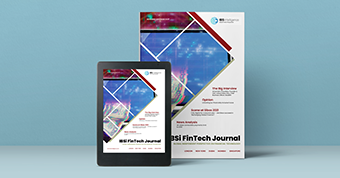
- The Most Trusted FinTech Magazine Since 1991
- Digital monthly issue
- Over 60 pages of research, analysis, interviews, opinions and rankings
- Global coverage
subscribe now
-

 DeFi12 months ago
DeFi12 months agoDeFi Technologies Appoints Andrew Forson to Board of Directors
-

 Fintech12 months ago
Fintech12 months agoUS Agencies Request Information on Bank-Fintech Dealings
-

 News1 year ago
News1 year agoBlock Investors Need More to Assess Crypto Unit’s Earnings Potential, Analysts Say — TradingView News
-

 DeFi12 months ago
DeFi12 months agoSwitchboard Revolutionizes DeFi with New Oracle Aggregator
-

 DeFi12 months ago
DeFi12 months agoIs Zypto Wallet a Reliable Choice for DeFi Users?
-

 News1 year ago
News1 year agoBitcoin and Technology Correlation Collapses Due to Excess Supply
-

 Fintech12 months ago
Fintech12 months agoWhat changes in financial regulation have impacted the development of financial technology?
-

 Fintech12 months ago
Fintech12 months agoScottish financial technology firm Aveni secures £11m to expand AI offering
-
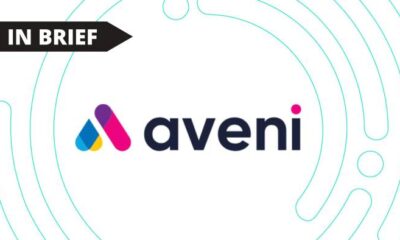
 Fintech12 months ago
Fintech12 months agoScottish financial technology firm Aveni raises £11m to develop custom AI model for financial services
-

 News1 year ago
News1 year agoValueZone launches new tools to maximize earnings during the ongoing crypto summer
-

 Videos5 months ago
Videos5 months ago“Artificial intelligence is bringing us to a future that we may not survive” – Sco to Whitney Webb’s Waorting!
-

 DeFi1 year ago
DeFi1 year agoTON Network Surpasses $200M TVL, Boosted by Open League and DeFi Growth ⋆ ZyCrypto













